Morning Eye Candy: Lightning Strikes
Posted in Around the Garden, Birding Bite, Learning Experiences on January 2 2013, by Matt Newman
Figuratively speaking, of course.
Photo by Ivo M. Vermeulen

Inside The New York Botanical Garden
Posted in Around the Garden, Birding Bite, Learning Experiences on January 2 2013, by Matt Newman
Figuratively speaking, of course.
Photo by Ivo M. Vermeulen
Posted in Learning Experiences on July 26 2012, by Matt Newman
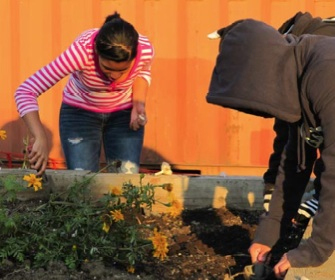 As the community outreach arm of The New York Botanical Garden, Bronx Green-Up is invested in the future of our Bronx neighborhoods, providing horticultural advice, technical assistance, and training to the growing urban gardening movement here in the borough. It’s this very program that earned the NYBG the prestigious National Medal for Museum and Library Service in 2010, as given by first lady Michelle Obama. Through workshops and certificate programs, as well as harvest festivals, BGU is still building on that honor, working tirelessly to bring community gardeners together through the sharing of information. And so far, it’s working. Just ask the newly-minted gardeners of the A.C.T.I.O.N. group!
As the community outreach arm of The New York Botanical Garden, Bronx Green-Up is invested in the future of our Bronx neighborhoods, providing horticultural advice, technical assistance, and training to the growing urban gardening movement here in the borough. It’s this very program that earned the NYBG the prestigious National Medal for Museum and Library Service in 2010, as given by first lady Michelle Obama. Through workshops and certificate programs, as well as harvest festivals, BGU is still building on that honor, working tirelessly to bring community gardeners together through the sharing of information. And so far, it’s working. Just ask the newly-minted gardeners of the A.C.T.I.O.N. group!
It stands for Activists Coming to Inform Our Neighborhood, and it’s an apt description for an outfit looking to identify and tackle environmental and social justice concerns at home. After four dedicated seasons of tutelage under our BGU horticulturists, these 21 teens returned to their south Bronx neighborhood with useful new tools in hand, ready to paint Hunts Point green. They did it not only through classroom learning, but hands-on activities in the soil, learning the ins and outs of a food system under increased scrutiny in areas such as the Bronx. Now they’re able to look past the supermarket produce aisle, turning to shovels, wheelbarrows, and plenty of elbow grease to tackle the issues in their own garden plots–from seed to harvest.
Posted in Around the Garden, Learning Experiences, People on July 19 2012, by Arlene Ellis
Arlene Ellis bridges the gaps between science, art, and fashion with her in-depth study of natural patterns, many of which she details on her website, Organic Lyricism. Here, she relates how her first trip to The New York Botanical Garden informed her latest clothing designs.
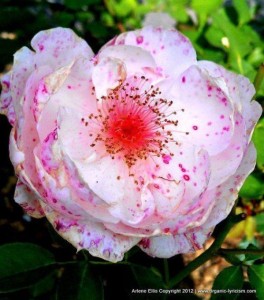 I had never heard of textile design while growing up, despite aspiring to become a designer or an artist. In fact, I only became familiar with the word “textile” last fall, a bit weird considering I began drawing patterns at age 15. This was the year that I discovered the phenomenon of fractals in nature.
I had never heard of textile design while growing up, despite aspiring to become a designer or an artist. In fact, I only became familiar with the word “textile” last fall, a bit weird considering I began drawing patterns at age 15. This was the year that I discovered the phenomenon of fractals in nature.
Fractals are geometric shapes that can be divided into smaller parts, each resembling the overall shape of the whole, regardless of scale. After learning about these fascinating designs, I began noticing them everywhere–in trees, ferns, snowflakes, and in natural formations. This preoccupation eventually sparked my interest in the ultimate fractal-like structure: the brain. In college, however, I soon proved to be more interested in drawing these patterns than I was in studying my neuroscience textbooks.
My interests were leaning heavily in one direction, but despite my constant drawing of patterns, textile design was still a foreign concept to me. It wasn’t until I began taking courses at New York’s School of Visual Arts that this changed. I learned that textile design would help me to unite my love for biological patterns with my love for art. I grew to understand that textile design plays a pivotal role in our daily lives; these patterns adorn our clothes, our bedding, our carpets and furniture. And I realized that I could use these visuals to communicate the beauty of nature to people on an intimate level. After visiting The New York Botanical Garden for the first time in June, that’s just what I set out to do.
Posted in Around the Garden, Learning Experiences on July 18 2012, by Matt Newman
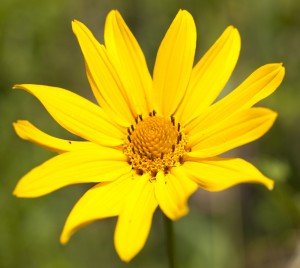 On any given day, our Twitter feed is a flood of information from fans, friends, fellow institutions and the daily happenings of New York City. But now and then we stumble over the kind of encouraging Garden adventure that pushes us to keep doing what we’re doing. That was the case last week, when Doing Art Together found its way into the stream.
On any given day, our Twitter feed is a flood of information from fans, friends, fellow institutions and the daily happenings of New York City. But now and then we stumble over the kind of encouraging Garden adventure that pushes us to keep doing what we’re doing. That was the case last week, when Doing Art Together found its way into the stream.
Executive Director Heather-Marie Brooks Montilla and her colleagues are heroes of a sort. I don’t think they run into burning buildings all that often; neither are they with the Coast Guard. But they’re as committed to their cause as any fireman. And Doing Art Together (DAT), the group’s long-running educational program, is something of a rescue operation in its own right. Focused on under-resourced children and young adults aged four to 21, these teachers have spent decades working to keep the city’s kids on the right path, turning to art, day in and day out, to make a positive mark on impressionable minds.
Posted in Adult Education, Gardening Tips, Learning Experiences, People on June 22 2012, by Joyce Newman
Last Days to Sign Up for Gardening Summer Intensives, Classes Start July 16
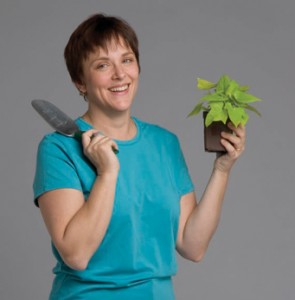 As a former Broadway performer, professional garden photographer, and writer, Ellen Zachos is a very talented NYBG instructor whose container gardening class comes alive with gorgeous slides and dynamic presentations.
As a former Broadway performer, professional garden photographer, and writer, Ellen Zachos is a very talented NYBG instructor whose container gardening class comes alive with gorgeous slides and dynamic presentations.
Ellen’s career as a gardener began when she got her very first plant–rather than a bouquet–as an opening-night gift, after performing in a Florida dinner theater production of Fiddler on the Roof.
“It was a Spathyphyllum, an ordinary peace lily,” she says, “but to me it was wonderful. I was intrigued, and I had never grown anything. My desire for knowledge just took over. My apartment filled with houseplants and books.”
She went on to study Commercial Horticulture and Ethnobotany at NYBG. After receiving her certifications, she authored several gardening books and founded Acme Plant Stuff in 1997, a company that designs, installs, and maintains both interior and exterior gardens.
Posted in Around the Garden, Learning Experiences on June 20 2012, by Matt Newman
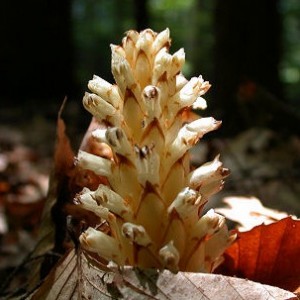
Strange things are afoot under the eaves of the trees. Or is it more appropriate to say that they’re underfoot, period? Either way, take a walk by the NYBG‘s Forest and just maybe you’ll see a few shady swindlers lurking in the underbrush.
Like the family cat or man’s best friend, trees tend to pick up their share of freeloaders as they go through life, though in this case we’re not talking about fleas or dreaded tapeworms. It’s a topic I tackled in part when we discussed the skullish blooms of the corpse plant only a few months ago. And like that pale parasite, there are other native bloodsuckers found in the forests of New York that are just as fond of mooching on their friends.
Posted in Adult Education, Learning Experiences, Testimonials on June 8 2012, by Joyce Newman
Seize your inspiration! Sign up for Summer Intensives to make the most of the season.
For Abbey Liebman, a fashion design artist in New York City, enrolling in the Botanical Art Summer Intensives was a rewarding way to broaden her skills in fashion design and the arts that was “well worth the money.”
“After taking just a few of the NYBG classes, I have already done freelance design work in botanical art for an apothecary company’s labels. I’d like to do more work like that or begin selling my own art,” says Abbey. She plans to get a certificate at NYBG over the period of a few years while she continues to work at her regular job.
Posted in Adult Education, Learning Experiences, People, Testimonials on May 30 2012, by Joyce Newman
New Summer Intensive classes in Horticultural Therapy start July 9!
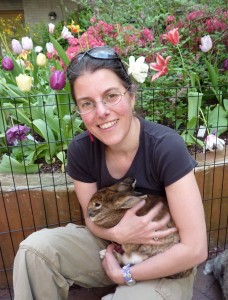
Among the lesser-known public gardens in New York City is the Enid A. Haupt Glass Garden, an amazing urban oasis located at the Rusk Institute for Rehabilitation. That’s where Lori Bloomberg first learned about horticultural therapy and where she fell in love with the people and the curriculum of the program.
“It just felt like home,” explains Lori. “And after a year of volunteering, I learned about the NYBG Horticultural Therapy Certificate Program with classes in the city, and decided to enroll. I started classes slowly in the regular program, and then I did the Horticultural Therapy Summer Intensive to accelerate the learning schedule.”
Lori majored in fine arts and design in college and she worked in graphic arts most of her career. Discovering the field of horticultural therapy was like finding a new way not only to heal the body and mind, but the spirit as well.
Posted in Adult Education, Learning Experiences, Programs and Events on May 21 2012, by Joyce Newman
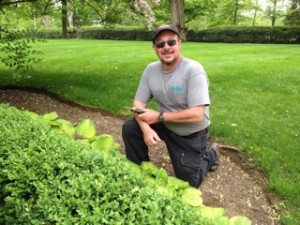
John Gembecki was going through some very tough times. Downsized after working 28 years for a major corporation, he knew he had to reinvent himself.
“How do I begin?” he kept asking himself. Then one night at a seminar offered by his local Yorktown Heights conservation board, he met Lauretta Jones, a teacher at The New York Botanical Garden, and everything fell into place.
“I took the landscape design five-week summer intensive program and it was an experience I’ll never forget,” John recounted. “It had been a long time since I had been in school and the ‘intense’ part of the program was hard to handle. But my children reminded me of all the things I told them when they wanted to give up because something was hard.”
Posted in Learning Experiences on May 16 2012, by Tai Montanarella
Tai Montanarella is the Manager of School and Family Programs at The New York Botanical Garden.
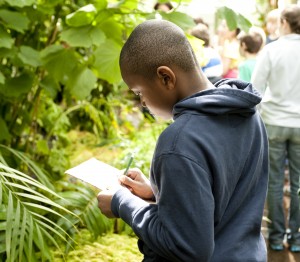 How do plants in the rain forest survive? This was the question on the minds of Prospect Hill Elementary School students as they explored the Enid A. Haupt Conservatory. It was here at the NYBG that they became first-hand field scientists for a day, embarking on their own botanical expedition through the diverse tropical rooms of our glasshouse.
How do plants in the rain forest survive? This was the question on the minds of Prospect Hill Elementary School students as they explored the Enid A. Haupt Conservatory. It was here at the NYBG that they became first-hand field scientists for a day, embarking on their own botanical expedition through the diverse tropical rooms of our glasshouse.
While they did not have to get on a plane to visit these rain forests, these third graders did have to travel through extreme biomes before they could reach them. This is a museum of plants, after all. Their journey began when they got off the bus, where they were not only greeted by GreenSchool educator Pilar Okeson, but by a fantastic Zelkova tree (Zelkova serrata). Hailing all the way from Japan, this deciduous tree does equally well in the temperate climate of New York City, and can reach 100 feet tall. It was only the first of many exotic plants the children would encounter.